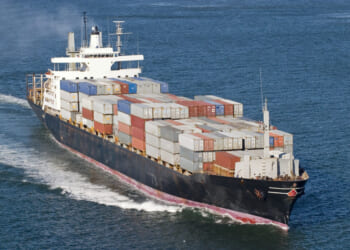On November 6, Reuters reported that Google was planning to build a large artificial intelligence data center on Australia’s Indian Ocean territory—Christmas Island—after signing a deal with the Australian Department of Defense earlier this year. Reportedly, Reuters had reviewed documents and interviewed officials related to this plan. The specifics of the data center and other details—such as its projected size, cost, and potential uses—remain secret. Google is allegedly in advanced talks to lease land near the island’s airport and completed a deal with a local mining company to secure its energy needs, Christmas Island Shire council meeting records show.
Military experts say such a facility would be an asset on the island, which is increasingly seen by defense officials as a critical frontline in monitoring Chinese submarine and naval activity in the Indian Ocean. A recent tabletop war game involving the Australian, US, and Japanese militaries highlighted Christmas Island’s role as a forward line of defense for Australia in any regional conflict, particularly its advantages for launching uncrewed weapons systems or drones. Bryan Clark, a former US Navy strategist who ran the war games, said having a forward “command and control” node on Christmas Island would be critical in a crisis with China or another adversary. “The data center is partly to allow you to do the kinds of AI-enabled command and control that you need to do in the future, especially if you rely on uncrewed systems for surveillance missions and targeting missions and even engagements,” Clark, now a Hudson Institute fellow, told Reuters.

The media immediately jumped on the bandwagon. After all, Google’s presence in the AI space has been growing, and in September it announced the opening of a new AI data center in the UK as part of a two-year investment program, totaling $6.82 billion. At the time of the announcement, Demis Hassabis—Co-Founder and CEO of Google DeepMind—said, “We founded DeepMind in London because we knew the UK had the potential and talent to be a global hub for pioneering AI.” Two sources from Christmas Island and one from the defense sector said the proposed new data center offered commercial advantages for Google due to its strategic Indian Ocean location between Africa, Asia and Australia, as well as potential military applications. Retired Navy Commodore Peter Leavy told Reuters, “Christmas Island is quite well positioned to at least monitor what is going through Sunda Strait, Lombok Strait, Malacca Straits. It is a really good location.”
But before the experts get too carried away, let’s allow a little bit of reason to apply and consider whether this is more akin to an AI hallucination than a concrete investment strategy.
Christmas Island is certainly geostrategically important: located in the Indian Ocean, 350 kilometers south of Java and 1,550 kilometers from the nearest point on mainland Australia. The Japanese certainly thought so, bombing it in March 1942, destroying the radio station before invading it to secure the phosphate mine for its military supply chain. Not much phosphate was exported, because of local acts of sabotage and allied torpedoing of cargo ships. The Australian government has much valued it after the phosphate mine closed, using it in the 1990s and 2000s to house politically problematic refugees and illegal immigrants.
Its isolation and geographic features immediately signal just how infeasible housing a militarily-sensitive—or indeed any—data center there actually is. The last thing anyone should want to house there is valuable data assets. It’s easy to bomb and hard to defend. Furthermore, it’s very costly to supply almost anything on the 52 square-mile island that has no surface water. Electricity is supplied by diesel generators, and the only water available comes from rain-sourced underground aquifers. The island has an average annual rainfall of about 85 inches, but that is not much water in total given the small land area in the first place. The average daily temperature varies little from the average 79 degrees. The business case for the energy or cooling facilities required to run a state-of-the-art data center appears severely challenged by this prospect.
Fortunately, Google was very quick to deny any plans of this sort. The island is potentially very valuable for the firm as a staging post in the building of its undersea fiber cable from Darwin to Singapore, announced in December last year. The land near the airport and the modest electricity supplies negotiated for will be very useful in both the laying of the cable and its subsequent operation.
If AI didn’t write the story, then it is hard to see how it came about given how absurd the proposition is. Maybe someone asked Santa for an Australian data center as a Christmas wish and somehow Chinese whispers scrambled the message?
The post Australia Wishes for Cloud Data Storage for Christmas appeared first on American Enterprise Institute – AEI.














